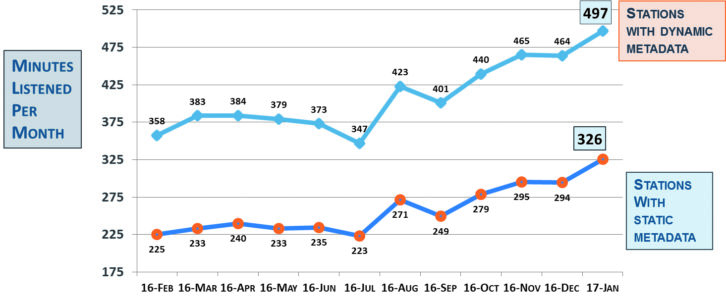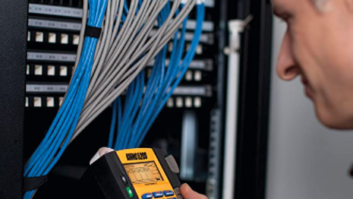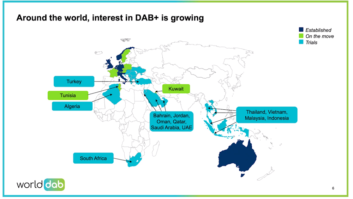 What should the role of radio in our connected world be? And what should your business do now to be part of that?
What should the role of radio in our connected world be? And what should your business do now to be part of that?
Those questions are explored in a 37-page paper released in March by a working group of the North American Broadcasters Association titled “The Value Proposition of Radio in a Connected World” and discussed in a session at the Broadcast Engineering & IT Conference at the NAB Show.
The paper makes for thoughtful reading by anyone interested in the overall direction of the radio industry and how it uses technical platforms. What follows is a summary of its major points based on my reading of the document and attending the session.
According to the authors, the paper, which can be found at https://tinyurl.com/NABA2019, is intended to help radio broadcasters protect their market position and capitalize on their strengths — but also to consider “strategic adjustments” in the face of technical and market changes. It is intended to “address thoughts about the North American radio industry, including major issues facing practitioners in Canada, Mexico and the United States.”
The primary contributors were NPR Vice President of Distribution Michael Beach; TagStation and Broadcaster Traffic Consortium President Paul Brenner of Emmis Communications; Xperi Corp. Executive Director Broadcast Business Development Jeff Detweiler; Emmis Director of Broadcast Engagement Michael Englebrecht; NABA Senior Coordinator, Committees Jenn Hadfield; NAB Vice President, Advanced Engineering David Layer; and NPR Senior Director, Strategic Planning Maryfran Tyler.
Organizations also contributing insights included HERE Technologies, Corus Entertainment, Canadian Association of Broadcasters, Bell Canada and Entercom.
MAJOR TAKEAWAYS
First, note that in the context of this paper, “radio” encompasses both over-the-air and online technologies. “If content is king, distribution is queen” was declared early in both the paper and the session.
Radio’s preeminent position in the dashboard of nearly every North American car accounts for much of OTA radio’s success. However, the “allure of new markets and products” delivered via IP (especially mobile broadband) compels broadcasters to accept IP as well.
In doing so, there are two important considerations:
- Distribution costs and quality of service will have an effect on the continuing rollout of IP-based services
- And perhaps more important, “If local broadcasters cede the airwaves, they lose the market limitations imposed by the FCC barriers to entry, and the ability to easily differentiate themselves from the masses of ‘internet radio’ broadcasters.”
After all, radio (and TV) licenses are effectively “franchises” limited by government policy. Even if the value of that franchise diminishes over time, there’s no reason to give it up in the foreseeable future.
To maintain the value of radio (in both physical media), the paper presents several ideas and technologies.
ONE-TO-MANY CONTENT
OTA radio excels in the one-to-many distribution model, and the paper suggests that many new mobile technologies being developed can actually be accomplished in the same fashion.
“While many functions require a bidirectional communications path, a significant portion of the data burden could be off-loaded to broadcast radio by doing what the frequency band does best: delivering one-to-many content,” the paper states.
We already realize that information can be transmitted efficiently utilizing a data network over in-band, on-channel digital FM or even the Radio Data System digital subcarrier over analog FM. And, as the paper states, “A significant advantage of digital radio is the ability to simultaneously deliver continuous content of both audio programming and data.”
Many mobile infotainment systems employ multiple receivers that scan and aggregate data from multiple broadcasts. “Broadcasters will have the opportunity to leverage station apps in the connected car to derive and ingest listener profiles for automated presets and infotainment preference.”
BEYOND INFOTAINMENT
We also need to look outside of the world of “infotainment.”
“As digital radio’s presence continues to grow, the technology becomes a logical avenue to extend power grid load management, established initially with analog RDS digital FM subcarrier services,” the paper states.
“As the connected car and autonomous vehicles become reality, road infrastructure updates will become a mainstay of one-to-many data delivery. Updates for digital signage, traffic flow, weather, road conditions and fuel prices are great applications of radio-delivered, geographically limited data,” it continues.
“IBOC digital, when compared to RDS subcarriers, affords significant benefits in throughput, integration capability and signal availability. It could also become an additional revenue source to stations.”
Skeptics wonder why companies would consider “old-fashioned” radio broadcasts when inexpensive unlicensed links abound. According to the paper, “WiFi connectivity is particularly susceptible to localized interference. While not completely immune to interference, digital FM radio has the advantage of higher signal-to-noise ratios, therefore making it more robust. Higher-power signals and digital carrier redundancy afford a higher reliability of service and better building penetration than cellular.”
METADATA AND THE CONNECTED CAR
Metadata includes more than just title and artist information. It is now often the means by which a listener can be presented with graphics associated with programming. Research presented in this paper indicates that enhanced data sharing substantially increases listening hours.

Emmis Broadcasting shared information gathered from its NextRadio platform, showing greater listener engagement related to the broadcast of dynamic metadata (see Fig. 1).
“Listeners spent more time with stations that supplied at least a static logo, than those that did not. Listeners spent even more time with stations supplying dynamic metadata than those that only supplied static metadata,” according to the paper.
In addition, radio station apps could include “clickable” buttons by which the listener could access additional information about the programming, such as a website, or to sites related to content, providing a new potential revenue source.
[What’s on the Docket for NABA in 2019?]
Hybrid radio refers to the convergence of broadcast and IP technology, and makes even more thorough use of the connected car. According to the paper, the development of hybrid radio provides the following benefits to radio broadcasters:
- Better integration of OTA radio and metadata received via the internet
- Support for “service following,” whereby a hybrid radio receiver switches from the OTA signal to a streamed version of the same program as reception conditions permit
- Keeping broadcast as an important media choice in the minds of not only users but of OEM manufacturers
Automobiles that include network connectivity (whether it is native or brought in by a driver or passenger) are thought of as connected cars. The nature of the broadband connection allows users to interact with and select more sources of content; and likewise, broadband affords a means by which the service source can gain data about the listener.
“User-analytics is a large, competitive and important industry that is beyond the scope of this document, but content providers can profit in many ways from information about numbers and locations of listeners,” according to the paper.
The paper makes recommendations regarding digital audio, non-broadcast audio, “proximity,” hybrid radio, metadata, connected cars and business strategies. See the accompanying box for a summary of NABA’s recommendations. It also offers an interesting “strengths, weaknesses, opportunities and threats (SWOT) analysis” of radio that’s worth reading.
There’s a lot there, so I recommend you take the time to read the entire paper, which you can download at https://tinyurl.com/NABA2019.
NABA RECOMMENDS
Among the recommendations of the NABA working group:
- Radio station management should take steps to offer content generated by the station(s) or station groups (networks) through as many technological media forms as possible.
- FM radio stations should at a minimum adopt static RDS tools to enhance listener experience.
- It is the opinion of the work group that radio stations should adopt at least static metadata, but preferably dynamic metadata.
- Stations should strongly consider adopting HD Radio hybrid IBOC mode per the NABA position paper on a Voluntary North American Digital Radio Standard.
- Management of radio stations and networks should support the work of NAB and others in working with automakers to maintain the prominence of radio in the vehicle and to improve radio’s functionality by supporting hybrid radio technologies.
- The management of radio stations and networks should immediately begin supporting internet-based content for use by hybrid radio receivers. Strong broadcaster support is vital for adoption of hybrid radio technology, especially with automakers.












